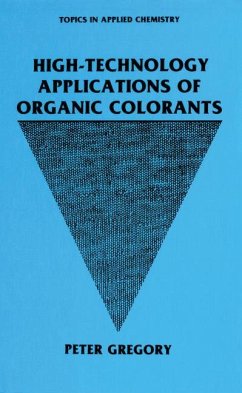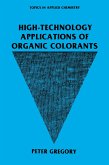The traditional use of organic colorants is to impart color to a substrate such as textiles, paper, plastics, and leather. However, in the last five years or so organic colorants have become increasingly important in the high technology (hi-tech) industries of electronics and particularly reprographics. In some of these reprographics applications the organic colorant is used in its traditional role of imparting color to a substrate, typically paper or plastic. Examples are dyes for ink-jet printing, thermally transferable dyes for thermal transfer printing, and dyes and pigments for colored toners in photocopiers and laser printers. In other applications it is a special effect of an organic colorant that is utilized, not its color. Examples are electrical effects, such as photoconduction and the electrostatic charging of toners, both of which are essential features for the operation of photocopiers and laser printers, and the selective absorption of infrared radiation, which is utilized in optical data storage. In electronic applications the organic colorant is often employed in a device. Typical examples include liquid crystal dyes, laser dyes, electro chromic dyes, dyes for solar cells, dyes for micro color filters, and dyes for nonlinear optical applications.








